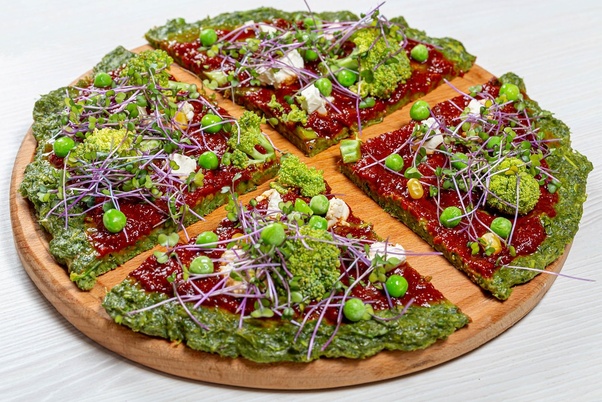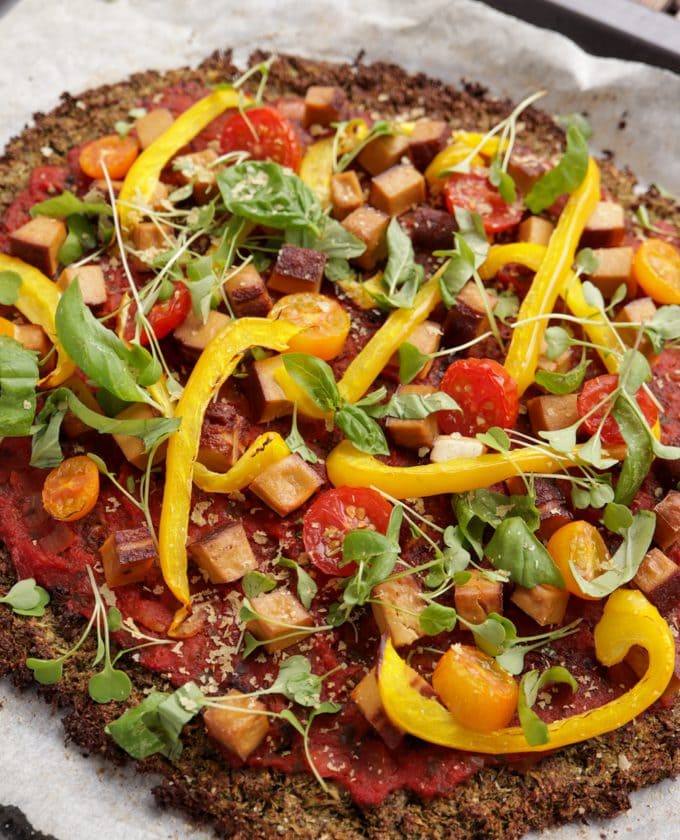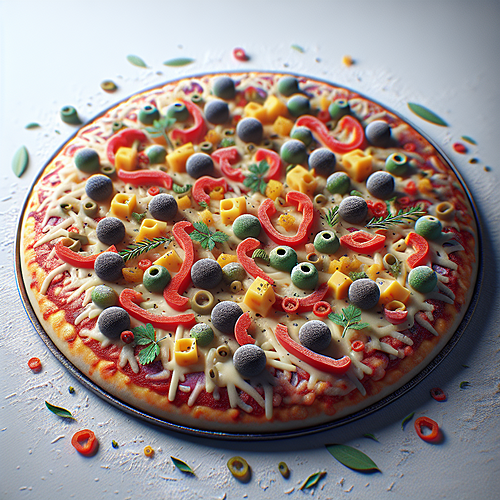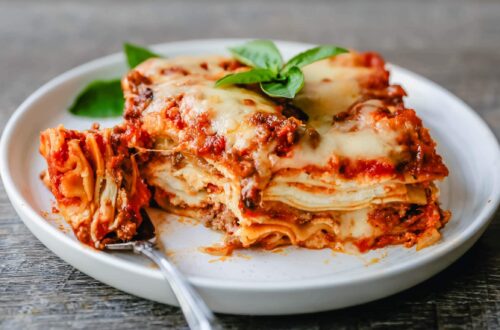
Healthier Alternatives: Examining Gluten-Free, Vegan, and Low-Carb Pizza Options
Pizza has long been a beloved comfort food enjoyed by people worldwide. However, traditional pizza often comes with a hefty dose of carbohydrates, gluten, and animal products, making it less suitable for those with dietary restrictions or health-conscious individuals. Fortunately, there’s a growing market for healthier pizza alternatives that cater to various dietary needs and preferences. In this article, we’ll delve into three popular options: gluten-free, vegan, and low-carb pizzas. By exploring the ingredients, nutritional benefits, and taste profiles of each, readers can make informed choices that align with their dietary goals and preferences. Whether it’s opting for a veggie-packed crust or exploring plant-based cheese options, there’s something for everyone seeking a healthier pizza experience, even while lounging in their cozy men’s hoodies.
Gluten-Free Pizza: A Delight for Gluten-Sensitive Individuals

Gluten-free pizza has gained significant traction in recent years, primarily due to the increasing awareness of gluten intolerance and celiac disease. Traditional pizza crust is typically made from wheat flour, which contains gluten—a protein that can cause adverse reactions in some individuals. Gluten-free pizza crusts, on the other hand, utilize alternative flours such as rice flour, almond flour, or tapioca flour, making them suitable for those with gluten sensitivities or celiac disease.
One of the key benefits of gluten-free pizza is its accessibility to individuals with gluten-related health concerns. By eliminating gluten from the equation, gluten-free pizzas offer a safe and enjoyable dining experience for those who would otherwise need to avoid traditional pizza altogether. Additionally, many gluten-free pizza options are now available in restaurants, grocery stores, and even as frozen meals, making them readily accessible to consumers seeking gluten-free alternatives. For those looking for a different culinary adventure, some establishments also offer extra strong cookie dough edibles as an alternative treat, catering to various dietary preferences and tastes.
Furthermore, gluten-free pizza crusts can be surprisingly versatile and delicious when prepared properly. While some may worry that gluten-free crusts lack the chewy texture and flavor of traditional pizza dough, innovative recipes, and techniques have led to the development of crusts that rival their gluten-containing counterparts. From crispy thin crusts to soft and doughy bases, gluten-free pizza offers a variety of options to suit different tastes and preferences.
If you run into vehicle problems on your way to a pizzeria make sure to contact the best vehicle tuneup in Toronto for a quick fix.
Vegan Pizza: Nourishing the Body and the Planet
In recent years, the popularity of veganism has surged, driven by concerns about animal welfare, environmental sustainability, and personal health. As a result, vegan pizza has emerged as a mainstream alternative, appealing to vegans and non-vegans alike. Unlike traditional pizza, which typically features cheese, meat, and other animal products, vegan pizza swaps these ingredients for plant-based alternatives, offering a compassionate and eco-friendly dining option.
One of the primary advantages of vegan pizza is its lighter environmental footprint. Animal agriculture is a leading contributor to greenhouse gas emissions, deforestation, and water pollution. By choosing vegan pizza, consumers can reduce their carbon footprint and support sustainable food practices. Additionally, vegan pizza often incorporates a diverse array of vegetables, fruits, herbs, and plant-based proteins, providing a nutritious and satisfying meal that’s rich in vitamins, minerals, and antioxidants.
If you wish to start a pizza restaurant but lack money to do so, you can always get a loan from the best loan servicing software for hard money lenders.
Moreover, vegan pizza is remarkably versatile, allowing for endless creativity in flavor combinations and toppings. From classic marinara and vegetable pizzas to innovative creations featuring vegan cheese, plant-based meats, and gourmet sauces, the possibilities are endless. Whether you prefer a simple Margherita pizza or a decadent BBQ jackfruit pizza, vegan options offer something for everyone to enjoy. By embracing vegan pizza, individuals can expand their culinary horizons while making ethical and sustainable choices that benefit both themselves and the planet.
Low-Carb Pizza: Redefining the Pizza Experience

Low-carb diets have gained widespread popularity for their potential health benefits, including weight loss, improved blood sugar control, and increased energy levels. As a result, low-carb pizza has emerged as a popular alternative for those looking to reduce their carbohydrate intake without sacrificing their love for pizza. Unlike traditional pizza crust, which is typically high in refined carbohydrates, low-carb pizza crusts utilize alternative ingredients that are lower in carbs and higher in fiber and protein. The good thing about these recipes is that you can experiment with them in your own way by adding to the pizza what you like, and with an Internet provider that manages IT services in San Antonio, users are provided with excellent Internet to which they can connect to other communities for healthy eating and share their ideas and recipes.
One of the key advantages of low-carb pizza is its potential to support weight management and blood sugar control. By reducing the amount of carbohydrates in the crust, low-carb pizza can help prevent blood sugar spikes and crashes, making it a suitable option for individuals with diabetes or insulin resistance. Additionally, the higher fiber and protein content of low-carb pizza crusts can promote feelings of fullness and satiety, reducing the likelihood of overeating and snacking between meals.
Furthermore, low-carb pizza offers a delicious and satisfying alternative to traditional pizza, with a wide range of crust options to choose from. From cauliflower crusts and almond flour crusts to zucchini crusts and even meat-based crusts, low-carb pizza allows for creativity and experimentation in the kitchen. By incorporating wholesome ingredients and flavorful toppings, low-carb pizza offers a guilt-free indulgence that’s both nutritious and delicious. If you rent a car in Beograd, you will also have the opportunity to try some of the very creative healthy pizzas in European pizzerias that have gone a step further with this idea.
Exploring Flavorful Toppings: Elevating Your Pizza Experience
Toppings play a crucial role in defining the flavor profile and overall enjoyment of a pizza. While traditional pizzas often feature classic toppings such as pepperoni, mushrooms, and mozzarella cheese, alternative pizza options offer a diverse array of toppings to suit different tastes and dietary preferences. From fresh vegetables and herbs to exotic fruits and plant-based proteins, exploring unique and flavorful toppings can elevate your pizza experience to new heights. On specially decorated and delicious cheese boards, you can often find different varieties of cheeses and their tasty alternatives like tofu or plant-based cheeses that you may also like as a topping for your healthy pizza.
One popular trend in alternative pizza toppings is the use of seasonal and locally sourced ingredients. By incorporating fresh produce that’s in season, you can enjoy pizzas that are bursting with flavor and nutrients. From ripe heirloom tomatoes and sweet corn in the summer to earthy wild mushrooms and squash in the fall, seasonal toppings add depth and complexity to your pizza while supporting local farmers and sustainable food practices.
Moreover, experimenting with international flavors and culinary traditions can add excitement and intrigue to your pizza creations. Whether you’re craving the spicy heat of jalapenos and chipotle sauce or the tangy sweetness of pineapple and barbecue sauce, incorporating global ingredients can transport your taste buds on a culinary journey around the world. From Mediterranean-inspired toppings like artichokes and olives to Asian-inspired toppings like tofu and kimchi, the possibilities are endless. By learning about different traditions and cultures, you also get a vision of the cuisine of those areas, and with excellent hospitality courses, you will learn everything you need to know about the different destinations you can visit as well as the tourist gems to see in those places.
Additionally, consider incorporating homemade sauces, spreads, and condiments to enhance the flavor and texture of your pizza. From creamy garlic aioli and tangy pesto to zesty harissa and smoky BBQ sauce, homemade toppings allow you to customize your pizza according to your taste preferences and dietary restrictions. By experimenting with different combinations of sauces and condiments, you can create pizzas that are uniquely delicious and satisfying. If you decide to invest smartly in one of the real estate properties for living like the very pleasant houses in Boca Falls, you will be able to enjoy your spacious and airy home and a spacious kitchen where you can devote yourself to developing your special and creative recipes.
Healthy Swaps: Redefining Pizza Ingredients for Nutritional Value
Traditionally, pizza is known for its indulgent ingredients, including rich cheeses, cured meats, and refined carbohydrates. However, alternative pizza options offer the opportunity to swap out these less nutritious ingredients for healthier alternatives without compromising on taste or satisfaction. By making simple ingredient swaps, you can transform your pizza into a nutritious and wholesome meal that’s packed with flavor and goodness. This can be a great snack for your child to get used to different combinations and tastes of vegetables, and a healthy alternative helps them concentrate and learn more easily, and if they still have trouble, they can find a great science tutor in Boulder to help them master their material easily and pass all the tests.
One of the easiest ingredient swaps for a healthier pizza is to replace traditional white flour crust with whole grain or alternative flour options. Whole grain flours, such as whole wheat, spelt, or buckwheat flour, offer more fiber, vitamins, and minerals compared to refined white flour, making them a healthier choice for pizza crusts. Additionally, alternative flours like almond flour, coconut flour, or cauliflower rice can provide gluten-free and low-carb options for those with dietary restrictions or preferences.
Furthermore, consider swapping out traditional cheese for plant-based alternatives to reduce saturated fat and cholesterol content. Vegan cheeses made from nuts, seeds, or soy offer the creamy texture and cheesy flavor that’s characteristic of traditional cheese, without the dairy-derived ingredients. Additionally, incorporating nutritional yeast—a deactivated yeast with a cheesy flavor—can add depth and umami to your pizza while boosting its nutritional value with B vitamins and protein. Such healthy alternatives to some everyday fast food that we use contribute to our better mood and health, and many of these movements also invest in some of the humanitarian organizations as well as very important movements for the best treatment for autism in order to provide the best therapy for children diagnosed with this condition.
Moreover, rethink your pizza sauce to reduce added sugars and sodium. Instead of store-bought marinara sauces that are often laden with sugar and salt, opt for homemade tomato sauces made from fresh or canned tomatoes, garlic, herbs, and olive oil. You can customize your sauce to your taste preferences by adding ingredients like roasted vegetables, spicy peppers, or balsamic vinegar for added depth and complexity of flavor. Recipes for making sauces from scratch like this have been going back a long way since the early days of pizza when it was served by poor townspeople and travelers on horseback with a knitted saddle blankets, so you can always find something creative and healthy to try yourself.
Artisanal Pizza Creations: Unleashing Your Inner Chef
While traditional pizzas often follow a set of standard recipes and flavor combinations, alternative pizza options offer the opportunity to unleash your creativity and culinary skills in the kitchen. By experimenting with unique ingredients, innovative techniques, and personalized flavor profiles, you can create artisanal pizza creations that reflect your individual taste preferences and culinary vision. From homemade crusts and sauces to creative toppings and garnishes, artisanal pizzas allow you to express yourself through food in exciting and delicious ways. If you really like all this, maybe you can start a business related to the production of healthy food, and whether you already have a business in that or something else, you need good promotion so that more people know about your brand and ideas, in which case you can search a great Colorado Springs SEO company that will create a promotion plan for you.
One of the hallmarks of artisanal pizza is the use of high-quality, locally sourced ingredients that celebrate the seasonality and freshness of produce. By sourcing ingredients from farmers’ markets, specialty grocers, and local farms, you can ensure that your pizzas are made with the finest and freshest ingredients available. Whether it’s heirloom tomatoes, organic basil, or artisanal cheeses, investing in quality ingredients can elevate the flavor and authenticity of your pizza creations. Feel free to visit some of the farm markets more often where you will always find the freshest ingredients, and in order to be able to travel comfortably to such purchases, have your car diagnosed and upgraded at an excellent transmission service in Buffalo.
Moreover, artisanal pizzas often feature handcrafted crusts that are made from scratch using traditional methods and techniques. From Neapolitan-style thin crusts to thick and chewy sourdough crusts, artisanal pizza doughs can be fermented, proofed, and shaped with care to achieve the perfect balance of flavor, texture, and structure. By experimenting with different flours, hydration levels, and fermentation times, you can customize your crust to your liking and create a truly unique and memorable pizza experience. In the highly visited and creative pizza museums that are protected by excellent access control systems from Philadelphia that can also be installed in private homes and buildings for added security, you can find the development of pizza and its dough but also toppings throughout history as well as some of the unique and perhaps strange combinations that existed.
Furthermore, don’t be afraid to think outside the box when it comes to pizza toppings and flavor combinations. From sweet and savory pairings like figs and prosciutto to unexpected ingredients like truffle oil and goat cheese, artisanal pizzas allow you to push the boundaries of traditional pizza norms and explore new culinary frontiers. By combining bold flavors, contrasting textures, and unexpected ingredients, you can create pizzas that are as visually stunning as they are delicious. Take this trip a step further and to test your pizza capabilities with different flavor combinations you can visit some of the nearby restaurants where you will encounter the most diverse flavor combinations, just remember to use a great roadside assistance app to help you along the way so you don’t have to worry in case of an accident on the road or car breakdown.
Balancing Flavor and Nutrition: The Key to Healthy Pizza

Finding the perfect balance between flavor and nutrition is essential when creating healthy pizza options that satisfy both your taste buds and your nutritional needs. While it’s tempting to load up your pizza with indulgent toppings and rich sauces, it’s important to keep in mind that balance is key when it comes to maintaining a healthy diet. By incorporating a variety of nutrient-dense ingredients, flavor enhancers, and cooking techniques, you can create pizzas that are both delicious and nutritious, without sacrificing taste or satisfaction. With the advanced technology devices in the kitchen that developed in parallel with the development of telecommunications and the demand for millimeter wave products, the love for cooking also increased because many things are much easier.
One of the keys to balancing flavor and nutrition in pizza is to focus on quality over quantity when it comes to ingredients. Instead of piling on excessive amounts of cheese, meats, and high-fat toppings, opt for smaller portions of flavorful ingredients that pack a nutritional punch. For example, instead of loading up your pizza with processed meats like pepperoni and sausage, choose leaner proteins like grilled chicken or tofu, and supplement with plenty of fresh vegetables and herbs for added flavor and nutrition. In this creative and healthy food young people who are members of organizations such as Readathon school fundraiser can enjoy while enjoying their favorite book.
Moreover, don’t underestimate the power of herbs, spices, and seasonings to elevate the flavor of your pizza without adding extra calories or sodium. From aromatic herbs like basil, oregano, and thyme to bold spices like garlic powder, chili flakes, and smoked paprika, incorporating a variety of seasonings can add depth and complexity to your pizza while boosting its nutritional value with antioxidants and phytonutrients. Additionally, experimenting with different cooking methods—such as roasting, grilling, or caramelizing—can enhance the natural flavors of your ingredients and create a more satisfying dining experience. Finally, you can go on a special tourist adventure in Europe and rent a car in Beograd in order to travel economically and comfortably and try the most interesting and delicious pizza combinations.
Conclusion
In conclusion, the landscape of pizza options has expanded significantly in recent years, with gluten-free, vegan, and low-carb alternatives providing healthier choices for consumers. Whether you’re gluten-sensitive, vegan, or simply looking to reduce your carbohydrate intake, there’s a pizza option to suit your dietary needs and preferences. By exploring the ingredients, nutritional benefits, and taste profiles of each alternative, individuals can enjoy the comfort and satisfaction of pizza without compromising their health or dietary goals.





